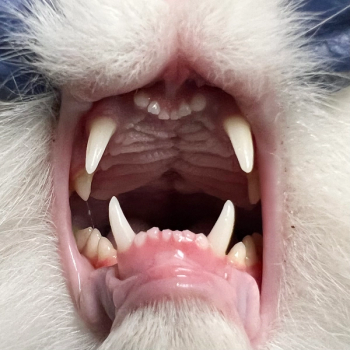
Practical Matters: Find the direction of skin tension when making skin incisions
When making skin incisions or excising masses or wounds, always orient the long axis of the incision or ellipse along the line of skin tension.
When making skin incisions or excising masses or wounds, always orient the long axis of the incision or ellipse along (i.e. parallel to) the line of skin tension. For reference, the lines of skin tension generally follow the same direction as the stripes on a zebra (Figure 1).
Figure 1: The pattern of a zebra's stripes provide reference for the direction of skin tension when you make an incision.
If in doubt, simply manipulating the skin by pinching and tensing it in different directions will indicate the direction of tension. Incisions made along the line of tension gape less and facilitate mobilization of the lateral margins for closure (Figure 2). The lateral margins will move perpendicular to the line of tension, which is in the plane of loose skin.
Figure 2: Incisions along the line of tension (left) gape less and facilitate closure of the lateral margins compared with incisions against the line of tension (right).
Giselle Hosgood, DVM, BVSc, MS, PhD, FACVSc, DACVS
Department of Veterinary Clinical Sciences
School of Veterinary Medicine
Louisiana State University
Baton Rouge, LA 70803-8140
Newsletter
From exam room tips to practice management insights, get trusted veterinary news delivered straight to your inbox—subscribe to dvm360.






